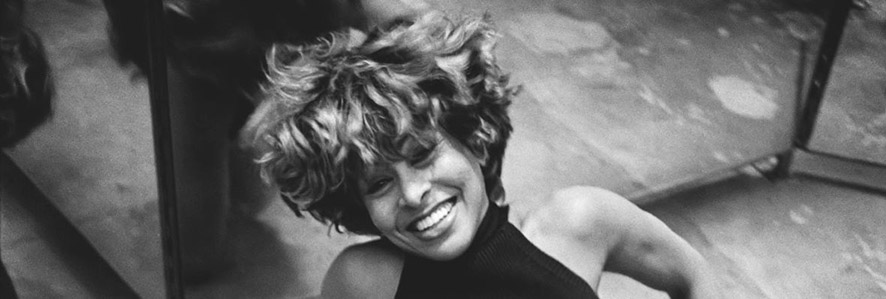Tina Turner was an unstoppable singer and stage performer who teamed with husband Ike Turner for a dynamic run of hit records and live shows in the 1960s and ’70s surviving her horrifying marriage to triumph in middle age with a string of hits, including the chart-topping “What’s Love Got to Do With It.” Dubbed the “Queen of Rock ‘n’ Roll,” Turner died at her home in Switzerland this week after a long illness at age 83.
Few stars travelled so far – she was born Anna Mae Bullock in a segregated Tennessee hospital and spent her latter years on an estate on Lake Zurich – and overcame so much. Physically battered, emotionally devastated, and financially ruined by her 20-year relationship with Ike Turner, she became a superstar on her own in her 40s, at a time when most of her peers were on their way down, and remained a top concert draw for years after.
“How do we say farewell to a woman who owned her pain and trauma and used it as a means to help change the world?” Angela Bassett, who played Turner in the 1993 biopic “What’s Love Got to Do With It,” said in a statement.
“Through her courage in telling her story, her commitment to stay the course in her life, no matter the sacrifice, and her determination to carve out a space in rock and roll for herself and for others who look like her, Tina Turner showed others who lived in fear what a beautiful future filled with love, compassion, and freedom should look like.
With admirers ranging from Mick Jagger to Beyoncé to Mariah Carey, Turner was one of the world’s most popular entertainers, known for a core of pop, rock and rhythm and blues favourites: “Proud Mary,” “Nutbush City Limits,” “River Deep, Mountain High,” and the hits she had in the ’80s, among them “What’s Love Got to Do with It,” “We Don’t Need Another Hero” and a cover of Al Green’s “Let’s Stay Together.”
Her trademarks included a growling contralto that might smolder or explode, her bold smile and strong cheekbones, her palette of wigs and the muscular, quick-stepping legs she did not shy from showing off. She sold more than 150 million records worldwide, won 12 Grammys, was voted along with Ike into the Rock and Roll Hall of Fame in 1991 (and on her own in 2021) and was honoured at the Kennedy Center in 2005, with Beyoncé and Oprah Winfrey among those praising her. Her life became the basis for a film, a Broadway musical and an HBO documentary in 2021 that she called her public farewell.
Until she left her husband and revealed their back story, she was known as the voracious on-stage foil of the steady-going Ike, the leading lady of the “Ike and Tina Turner Revue.” Ike was billed first and ran the show, choosing the material, the arrangements, the backing singers. They toured constantly for years, in part because Ike was often short on money and unwilling to miss a concert. Tina Turner was forced to go on with bronchitis, with pneumonia, with a collapsed right lung.
Other times, the cause of her misfortunes was Ike himself.
As she recounted in her memoir, “I, Tina,” Ike began hitting her not long after they met, in the mid-1950s, and only grew more vicious. Provoked by anything and anyone, he would throw hot coffee in her face, choke her, or beat her until her eyes were swollen shut, then rape her. Before one show, he broke her jaw and she went on stage with her mouth full of blood.
Terrified both of being with Ike and of lasting without him, she credited her emerging Buddhist faith in the mid-1970s with giving her a sense of strength and self-worth and she finally left in early July, 1976. The Ike and Tina Turner Revue was scheduled to open a tour marking the country’s bicentennial when Tina snuck out of their Dallas hotel room, with just a Mobil credit card and 36 cents, while Ike slept. She hurried across a nearby highway, narrowly avoiding a speeding truck, and found another hotel.
“I looked at him (Ike) and thought, ‘You just beat me for the last time, you sucker,’” she recalled in her memoir.
Turner was among the first celebrities to speak candidly about domestic abuse, becoming a heroine to battered women and a symbol of resilience to all. Ike Turner did not deny mistreating her, although he tried to blame Tina for their troubles. When he died, in 2007, a representative for his ex-wife said simply: “Tina is aware that Ike passed away.”
In 2018, she made one of her last public appearances, dropping in at the premiere of ‘Tina’ the London musical based on her life story, which covers virtually every aspect, good and bad, of her incredible 50-year singing career.
“I’ve been blessed with a wonderful career,” she wrote in the show’s program, “and after more than 50 years of performing I don’t need a musical, I don’t need another show. But I get so many cards and letters — I still can’t believe how people feel about me on stage and the legacy they say I left. People tell me I gave them hope. It meant so much to people I feel I have to pass it on, and I hope this show serves what the people need, as a reminder of my work.”
Here’s Tina doing “Proud Mary” on Oprah in 2004.

